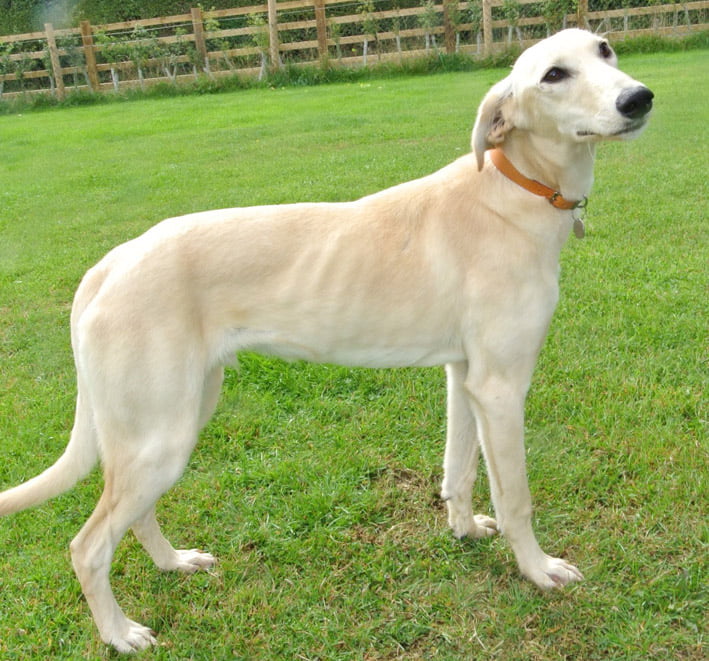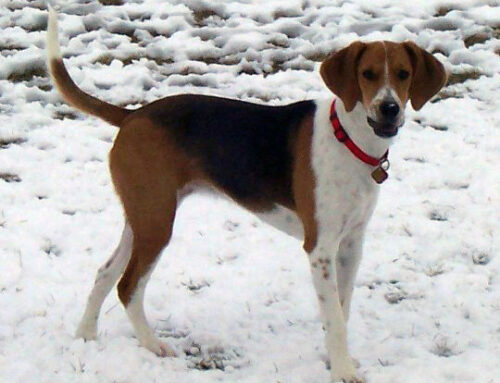Male Height (typical): 55-71 cm. (22-28 inches)
Female Height (typical): 55-71 cm. (22-28 inches)
Size: Medium – Large
Male Weight (typical): 27-32 kg. (60-70 pounds)
Female Weight (typical): 27-32 kg. (60-70 pounds)
Country of Origin: England
Exercise Required: Moderate – High
Expected Life Span: 12-14 Years
Best suited as: Hunting, Companion
Other names: Norfolk Lurcher
Description – The Lurcher is a medium sized dog that is typically sports a short coat of hair that thickens on its underside in the winters. Since the dog is a crossbreed of various sighthounds, the colors of the coat can vary considerably but are commonly found in the brown or tan range. It has a very pronounced chest, which provides ample lung capacity to allow the dog to hunt or play for hours. A Lurcher will have long and straight legs that provide the fast and agile movement needed to pursue game. Their soft, fur tufted ears are set high on their heads and compliment their small darker eyes that are always on the prowl for a little fun.
Origin & History – This dog was originally bred in England to hunt small game. Since most of the population of the country was not part of the upper class, they could not participate in an organized hunt. The Lurcher was bred to allow them to poach game quickly from protected fields for their food. This dog is not considered an official breed and offers a wide variety of crossbreeds. The most common of these are Greyhound/Terrier and Greyhound/Collie but can include other breeds as well. Originally the larger breeds of these dogs were very sought after to help with a hunt. Over the years there have been smaller varieties bred as well that makes great family pets. The name Lurcher comes from the Roman word “lurâ€, which means thief. They got this name because of their use in poaching game from lands owned by others.

Temperament – The Lurcher is a very even-tempered dog that loves to follow a strong master. Because it was bred to hunt small game the Lurcher is a very fast and agile dog that can be taught to obey and follow a wide range of commands. The dog is good around children and favors outdoor activities like walks and runs. The Lurcher is eager to please and will learn to follow commands if taught properly. Unlike other breeds that wander, the Lurcher will follow a master at the heel unless it catches sight of a smaller animal, which it may pursue. It is also good around other dogs and can assume a submissive role in an established pack.

Exercise & Grooming – This breed requires a minimum of one long walk a day to stay fit. It has a fairly high energy level and is not especially good in confined spaces like small apartments. Allowing the dog to roam free in a well-protected back yard is a great option as long as you take precautions to eliminate escape routes. The dog is bred to chase small game and will quickly pursue a rabbit or squirrel that crosses its path. This means you need to take care when walking the dog to make sure it is leashed to prevent injury.

Health Concerns – The Lurcher is a fairly hearty breed that enjoys a longer life than many other dogs. If they are exercised regularly they should not fall victim to some of the health problems of other breeds. The real danger for this dog is inactivity since it is bred to be an active animal. If they are not exercised often they can gain weight from these idle periods and develop all the problems that come with an overweight dog.

Lurcher Organisations in Australia
No club information listed
Lurcher Organisations in the UK
The Sussex Longdog Association
Lurcher Organisations in the US
Southern Lurcher Rescue
Did we miss your organisation? Let us know. Contact Us






Leave A Comment